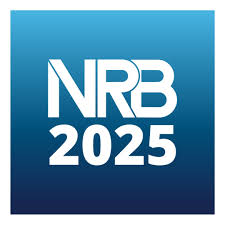February 2023. I really like to eat chocolate hearts on Valentine’s Day.
It’s a month to lift up the concept of love that includes various kinds of candy and often, a special dinner with a special someone. But the meaning of love goes far past the color red, wonderful desserts and romantic evenings. Wikipedia says that it originated as a Christian feast day honoring a martyr named Valentine. That article says that it also includes a number of martyrdom stories associated with various saints connected to February 14. So, in a transcendent way, the ‘heart’ of love goes beyond how I feel about something or someone; it extends to how I care for others. On this plunge into the deep, let’s understand that love involves sacrifice and the courage to speak out when harmful patterns appear that have costly, negative outcomes. This is called agape love. The faith-based roots of agape love say it this way: LOVE is not an impulse from the feelings, it does not always run with the natural inclinations, nor does it spend itself only upon those for whom some affinity is discovered. Love seeks the welfare of all, Rom 15:2, and works no ill to any, 13:8,9,10; love seeks opportunity to do good to all men(from Vine’s Expository Dictionary of Biblical Words, Copyright © 1985, Thomas Nelson Publishers).
At DA:NCE Awareness, we love children. And we are passionate about educating adults with an evidence-based message that protects children in dance. That’s the simple motive behind why I spoke about this issue during the California Dance Educator’s Association Conference(CDEA) in January 2023 at Cal State Fullerton. I talked about the cultural curtain that has normalized what is not normal in movement. My presentation was called ‘Wholesome to Hypersexualized: What Happened to Children’s Dance?’ During that time, I shared from my heart about the differences between healthy and harmful dance. And once again, I found out that many dance educators are exactly like me. They are alarmed about the hypersexualization, de-humanization, and objectification of children in dance that has become the norm. Just last month the DA:NCE newsletter featured Heather Harrington’s article about ‘Scoring for Appearance’ alongside the article by Lisa Sandlos titled ‘Pretty in Pink’. These are two prominent educators from the dance field that discuss the epidemic of abuse that has begun to saturate dance. Like you, most dance educators don’t know what to do about the distortion of dance because they haven’t had the resources, connections, and research to address the problem. Until DA:NCE was founded.
At DA:NCE, we connect the dots around the big picture of what has occurred through hypersexualization of children through the internet, the media and the porn industry. DA:NCE names the problem and identifies action steps to stop it. Sociologist Gail Dines calls it a ‘pornified culture’. Researcher Philip Adams calls it ‘corporate paedophilia.’ To all of you who read my blog and to those who are new to DA:NCE, let me remind you that the porn industry makes money by turning children into mini-adults. The porn industry does not care about protecting children. That’s why the purpose of DA:NCE is to supply support, resources, and problem-solving tools for both dance educators and caring adults who want to protect children and love them with an ultimate, transcendent, agape purpose.
Drum roll. Today, we’re unveiling a Valentine’s gift just for you.
In November of 2022, I came across an article on the internet written by Clare Amari. It was developed to analyze questions that adults should ask before enrolling their child in ANY youth organization or program. Action-based and practical. Like agape love.
Here’s the link on DA:NCE. My summary of the article is below and contains the 8 steps that protect the innocence of children in children’s dance. Of course, they are universal and apply to any kind of youth organization. I recommend that you read the full article yourself because it goes into more depth to explain the meaning of each question. These questions should be asked anytime a child is enrolled in any kind of dance program:
- Does the organization have a youth-protection policy?
- Does the organization conduct thorough background checks on employees and volunteers?
- Does the organization require employees to complete a written application form acknowledging their duty to follow all youth-protection policies, procedures and guidelines?
- Does the organization provide training in youth protection for staff, volunteers and, if appropriate, participating families?
- Does the organization restrict personal contact between children and staff or volunteers outside the activities of the organization?
- Does the organization maintain a “two-deep” policy?
- Does the organization have a clear procedure in place for managing reports and complaints?
- Has the organization ever received a complaint?
Dr. Benjamin Saunders, professor emeritus of the National Crime Victims Research and Treatment Center at the Medical University of South Carolina is the author. He has used his expertise to help adults understand an organization’s commitment to youth safety. The questions target red flags, particularly for sexual abuse, and should illuminate any major deficiencies in an organization’s policies and enforcement. Feel free to share the information with your relational world. This is a much-needed cultural resource.
Last but not least, enjoy the month of February with its focus on food, candy and romance. Then remember to go deeper, and think about the importance of agape love as you reach into the lives of others. Especially as you take steps to protect children from harm.










